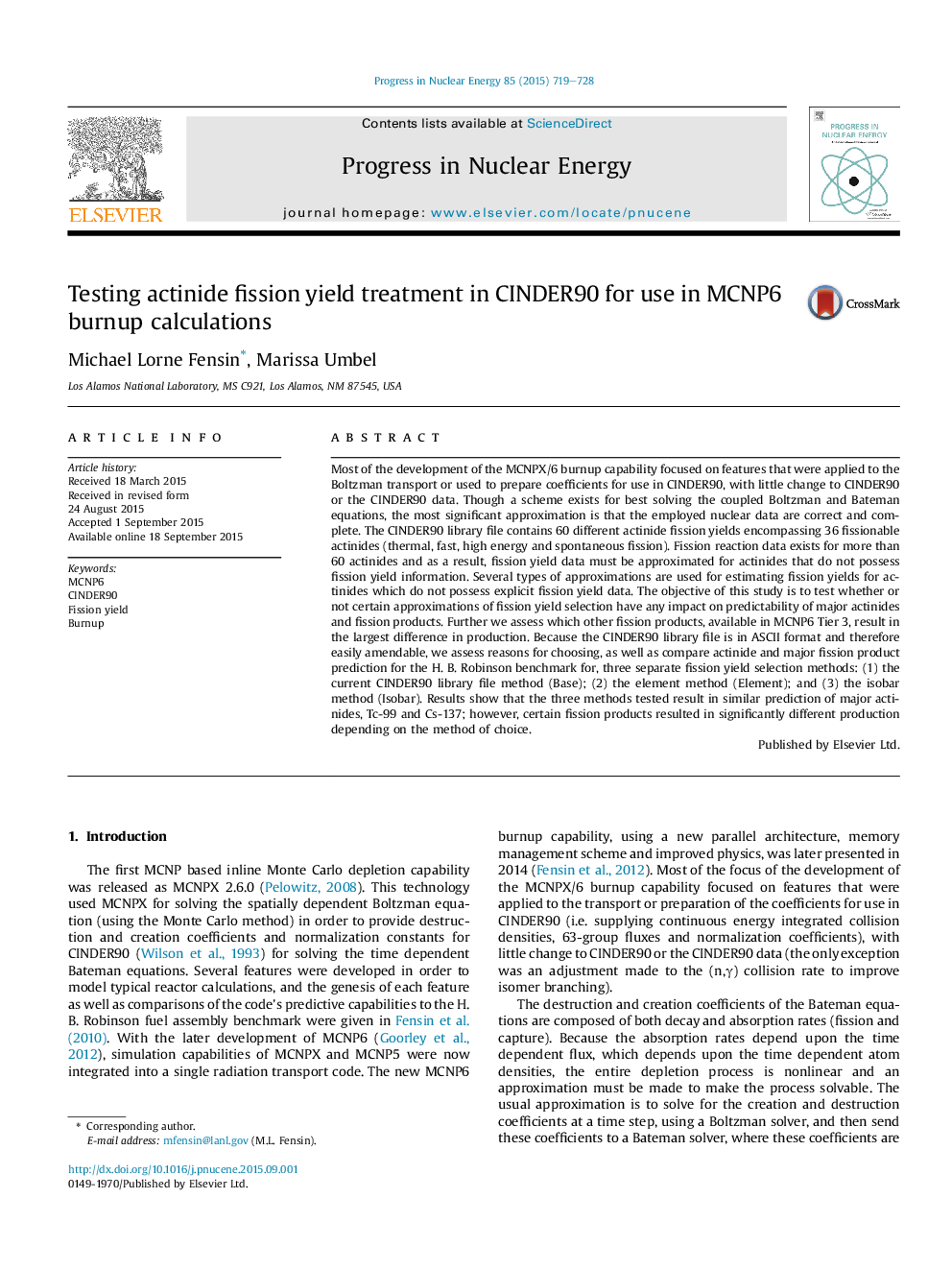| Article ID | Journal | Published Year | Pages | File Type |
|---|---|---|---|---|
| 8085343 | Progress in Nuclear Energy | 2015 | 10 Pages |
Abstract
Most of the development of the MCNPX/6 burnup capability focused on features that were applied to the Boltzman transport or used to prepare coefficients for use in CINDER90, with little change to CINDER90 or the CINDER90 data. Though a scheme exists for best solving the coupled Boltzman and Bateman equations, the most significant approximation is that the employed nuclear data are correct and complete. The CINDER90 library file contains 60 different actinide fission yields encompassing 36 fissionable actinides (thermal, fast, high energy and spontaneous fission). Fission reaction data exists for more than 60 actinides and as a result, fission yield data must be approximated for actinides that do not possess fission yield information. Several types of approximations are used for estimating fission yields for actinides which do not possess explicit fission yield data. The objective of this study is to test whether or not certain approximations of fission yield selection have any impact on predictability of major actinides and fission products. Further we assess which other fission products, available in MCNP6 Tier 3, result in the largest difference in production. Because the CINDER90 library file is in ASCII format and therefore easily amendable, we assess reasons for choosing, as well as compare actinide and major fission product prediction for the H. B. Robinson benchmark for, three separate fission yield selection methods: (1) the current CINDER90 library file method (Base); (2) the element method (Element); and (3) the isobar method (Isobar). Results show that the three methods tested result in similar prediction of major actinides, Tc-99 and Cs-137; however, certain fission products resulted in significantly different production depending on the method of choice.
Keywords
Related Topics
Physical Sciences and Engineering
Energy
Energy Engineering and Power Technology
Authors
Michael Lorne Fensin, Marissa Umbel,
